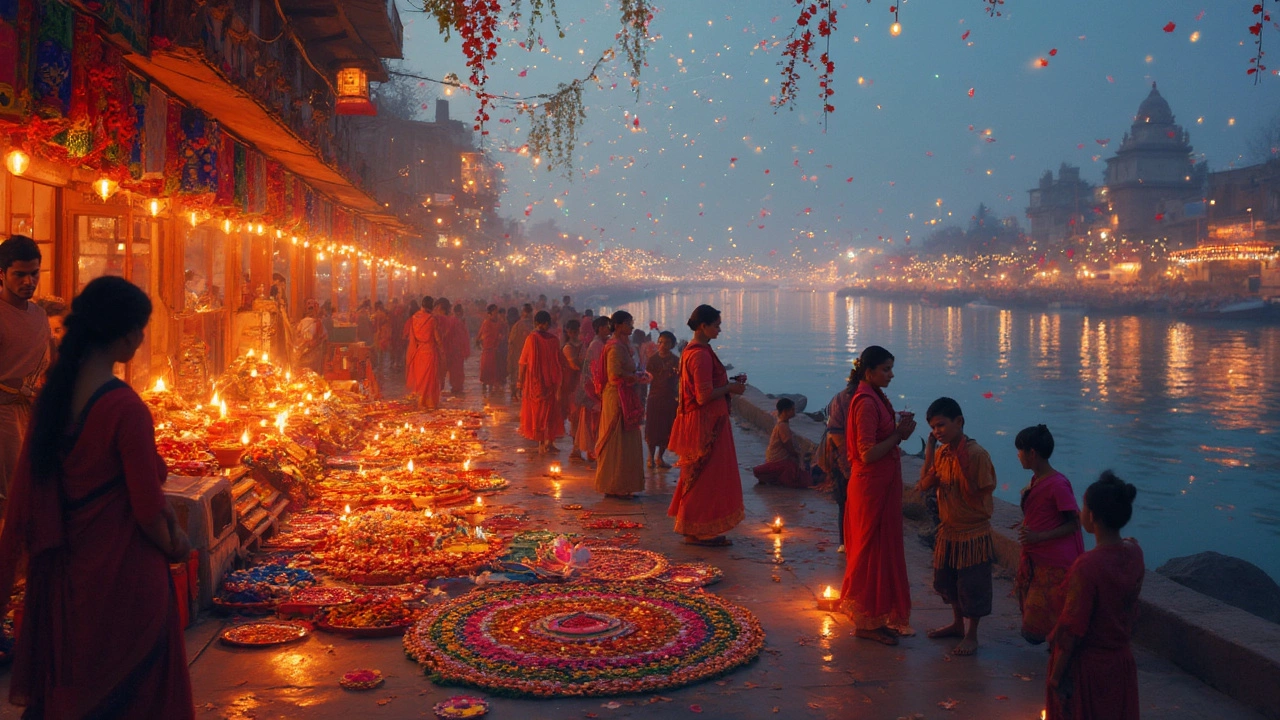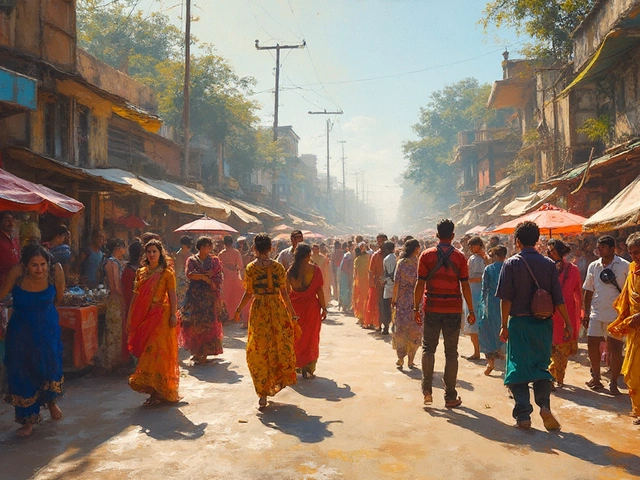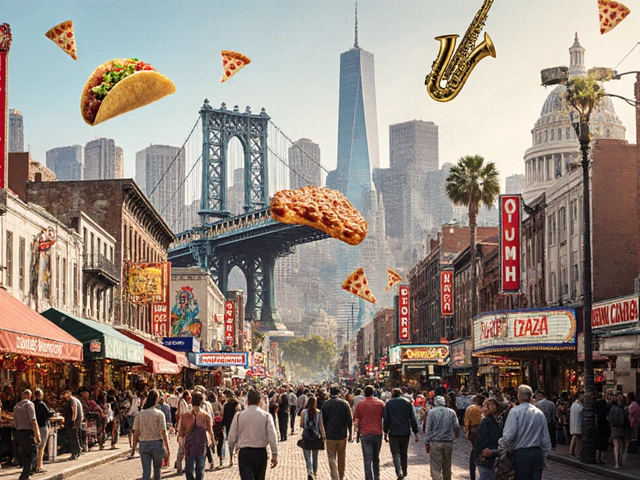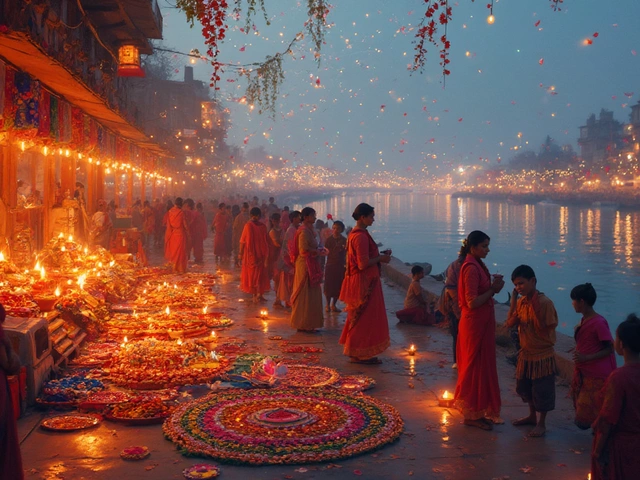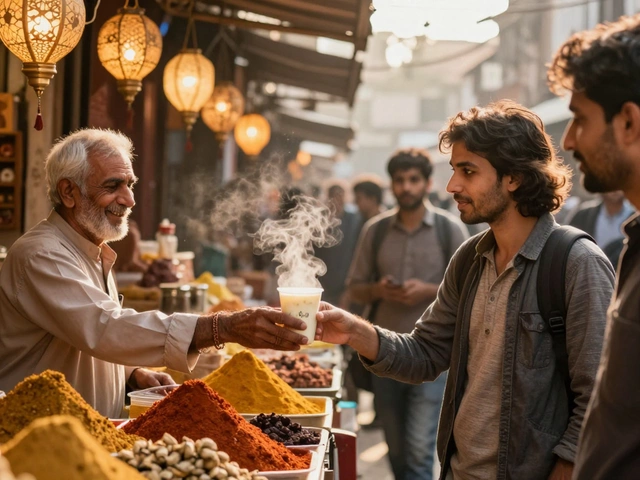India is a tapestry of cultural stories woven together through its vibrant festivals, historic sites, and diverse traditions. For anyone curious about cultural tourism, India presents an irresistible invitation. Have you ever thought about experiencing the colorful frenzy of Holi in Mathura or visiting the serene temples of Tamil Nadu? These experiences aren't just sightseeing—they're a deep dive into a living history.
Cultural tourism isn't just about clicking pictures and moving on. It's about learning, interacting, and respecting the heritage that different communities bring to life. India, with its age-old customs and ever-evolving stories, offers countless opportunities to travelers looking to enjoy these authentic cultural exchanges. From the rustic charm of Rajasthan's palaces to the spiritual allure of Varanasi, there's so much to explore.
- Understanding Cultural Tourism
- Top Destinations for Cultural Tourism in India
- Festivals and Events That Define Indian Culture
- Tips for Meaningful Cultural Experiences
- Preserving Cultural Integrity While Traveling
Understanding Cultural Tourism
Cultural tourism is all about connecting with the essence of a place through its traditions, habits, and history. Unlike typical tourist destinations where visitors might just hit the beach or go on a city tour, cultural tourism digs deeper. In India, this means engaging with the soul of the country, experiencing its vibrant dances, tasting its diverse cuisine, and understanding its complex history through various landmarks.
Why Choose Cultural Tourism?
Choosing cultural tourism gives travelers a chance to learn and grow from their experiences. By stepping into another culture's shoes, we get a clearer picture of not just their world but our own perspectives, too. It's an enriching way to travel that also supports local economies by creating jobs in small communities, and helps preserve historical sites and traditional practices. Isn't it amazing how travel can change not only us but the places we visit, too?
The Cultural Tourism Scene in India
India is a major destination for cultural tourism, thanks to its 38 UNESCO World Heritage Sites and innumerable traditional festivals celebrated across its vast landscape. Whether it's attending a Diwali celebration in a small village or visiting the ancient city of Varanasi where every street tells a story, there's always something to learn and enjoy. Cultural tourists often gravitate towards historic areas like the stunning palaces of Rajasthan or the awe-inspiring ruins of Hampi.
Here’s a fun fact: More than 30% of international tourists visiting India engage in cultural tourism activities, seeking those memorable experiences that cannot be packaged or bought elsewhere.
How to Be a Respectful Cultural Tourist
When you're diving into another culture, it's crucial to approach with respect and openness. Here are some quick tips:
- Research the customs and traditions of the area before you visit.
- Learn a few basic phrases in the local language.
- Dress appropriately for the cultural norms of the region.
- Be open-minded and ready to learn from locals.
By following these simple steps, you'll ensure that your travel not only brings joy to you but respects the places and people you interact with.
Top Destinations for Cultural Tourism in India
Exploring India is like stepping into a vivid storybook of varied traditions and living history. It's the countless cultural tourism opportunities that make India such a hot spot for travelers. Whether you're drawn to ancient architecture or spirited festivals, India's got it all.
Jaipur, Rajasthan - The Pink City
When it comes to grand palaces and vibrant markets, Jaipur in Rajasthan tops the list. Known as the Pink City, it's famous for the iconic Hawa Mahal and Amer Fort. Walking through its bustling streets is an experience in itself. Make sure to shop for local handicrafts—Rajasthan is incredibly rich in traditional arts.
Varanasi, Uttar Pradesh - The Spiritual Candle
Varanasi is considered one of the holiest cities in India. Located on the banks of the Ganges River, it's a fascinating place where life and death intermingle. Tourists often visit to witness the Ganga Aarti, a grand ritual held at the riverbank every evening. It's a sight that stays with you long after you leave.
Kolkata, West Bengal - The Cultural Hub
Known as the cultural capital of India, Kolkata is famous for its literary heritage and colonial architecture. Don't miss the Durga Puja festival, a grand celebration that showcases the city’s rich artistic traditions. Visiting the Indian Museum and Victoria Memorial gives you a glimpse into the city's past.
Hampi, Karnataka - The Ruins of History
Hampi is a UNESCO World Heritage Site known for its ancient temples and breathtaking landscapes. It's a haven for history buffs who are fascinated by the remains of the Vijayanagara Empire. Touring the city feels like walking through a large, open-air museum.
Amritsar, Punjab - The Sacred City
Home to the Golden Temple, one of the most significant symbols of Sikhism, Amritsar is a deeply spiritual city. Visitors often speak of feeling a profound sense of peace here, especially when witnessing the 'Langar' or community kitchen serving thousands of meals daily, embodying the principles of equality and service.
Whether you're a history geek, a photography enthusiast, or someone looking to soak in the spirituality, these destinations offer a perfect mix of tradition, art, and soul. Traveling to these places isn't just a trip—it's a cultural awakening.
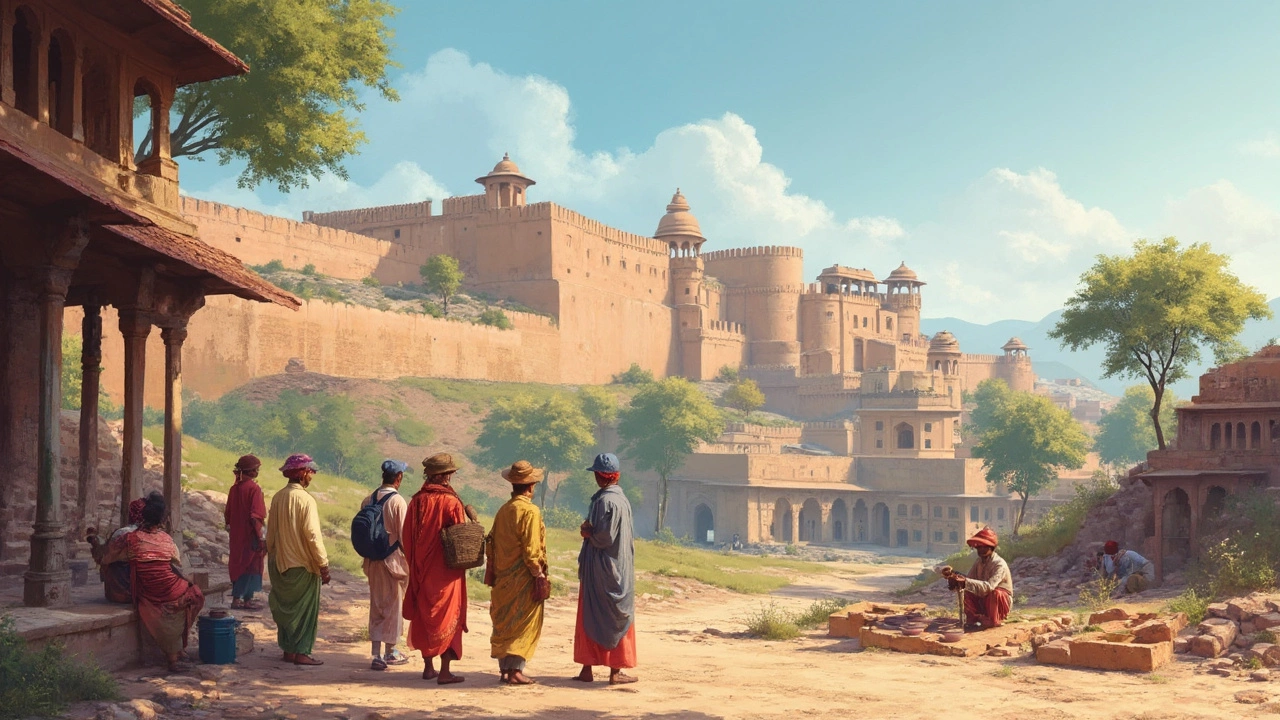
Festivals and Events That Define Indian Culture
When it comes to experiencing cultural tourism in India, festivals are the heartbeat of the nation. They offer a genuine peek into the traditions and values that have shaped the country over centuries. Let's dive into some of the most important festivals that bring India's rich culture to life.
Diwali: The Festival of Lights
Diwali, also known as Deepavali, is celebrated across India and even globally by the Indian diaspora. It marks the triumph of light over darkness and is a time for family get-togethers, worship, and feasting. Homes are traditionally decorated with oil lamps called diyas, and fireworks light up the sky. Visiting during Diwali ensures tourists witness the vibrant energy and joy among locals.
Holi: A Riot of Colors
Holi, often referred to as the festival of colors, usually takes place in March. It’s a playful way to usher in spring with color-coded fun. Tourists are welcome to join in, but it's best to know the gentle etiquette—always ask before smearing colors! Cities like Mathura and Vrindavan hold particularly grand celebrations, embracing both locals and travelers.
Pongal: Celebrating Harvest
Pongal is a major festival in Tamil Nadu, celebrated in January. It aligns with the harvest season, giving thanks for the prosperity of crops. The festival lasts for four days and involves cooking a dish by the same name from rice, lentils, and sweeteners. Witnessing local communities celebrate Pongal offers insights into the agrarian heart of India.
Eid al-Fitr: An End to Fasting
Eid marks the end of the holy month of Ramadan—a time of fasting and prayer for Muslims worldwide. In India, the celebration is vibrant and communal, involving feasts, prayers, and fasting. It’s a time of coming together, with markets and streets bustling with people celebrating. Tourists often appreciate the generosity and friendships that are extended to them.
These festivals and events not only highlight the diversity but also the shared enthusiasm and unity among the people. Engaging with locals during these celebrations helps travelers connect with the very soul of India, making their India tourism experience truly unforgettable.
Tips for Meaningful Cultural Experiences
So, you're all set for a cultural adventure in India? Awesome choice! But how do you make sure you're getting the real deal and not just the glossy version meant for tourists? Here's how:
Engage with Local Communities
The best stories come from people who live them every day. When visiting places like Rajasthan or Kerala, spend time in villages or attend local workshops. Talk to artisans, visit markets, and maybe even try your hand at traditional crafts. It's about building connections, not just consuming culture.
The Times once noted, "The most authentic experiences come when travelers become part of the community, even if just for a day."
Participate in Festivals
India is famous for its festivals. They're colorful, loud, and offer a deep dive into spirituality and tradition. Join the frenzy of Holi in Vrindavan or the push of humanity at the Kumbh Mela. Just remember, it's not just about observing—be ready to take part and celebrate!
Respect and Observe
Customs vary greatly from state to state. In temples, cover your head or remove shoes if required. When visiting a sacred site like the Golden Temple in Amritsar, observe the rules. Show respect for practices and traditions, even if they seem unfamiliar.
Learn Basic Phrases
Communication is key, right? Learn a few phrases in Hindi or the regional language. A simple "Namaste" (greeting) or "Dhanyavad" (thank you) goes a long way towards opening doors for deeper interactions.
Choose Responsible Tourism
Look for tours or activities that prioritize community welfare. This often means supporting businesses that reinvest in local areas or promote cultural literacy. Check certifications and reviews beforehand.
Incorporate these tips, and you'll not just see India. You'll experience it, and that's what cultural tourism is all about.
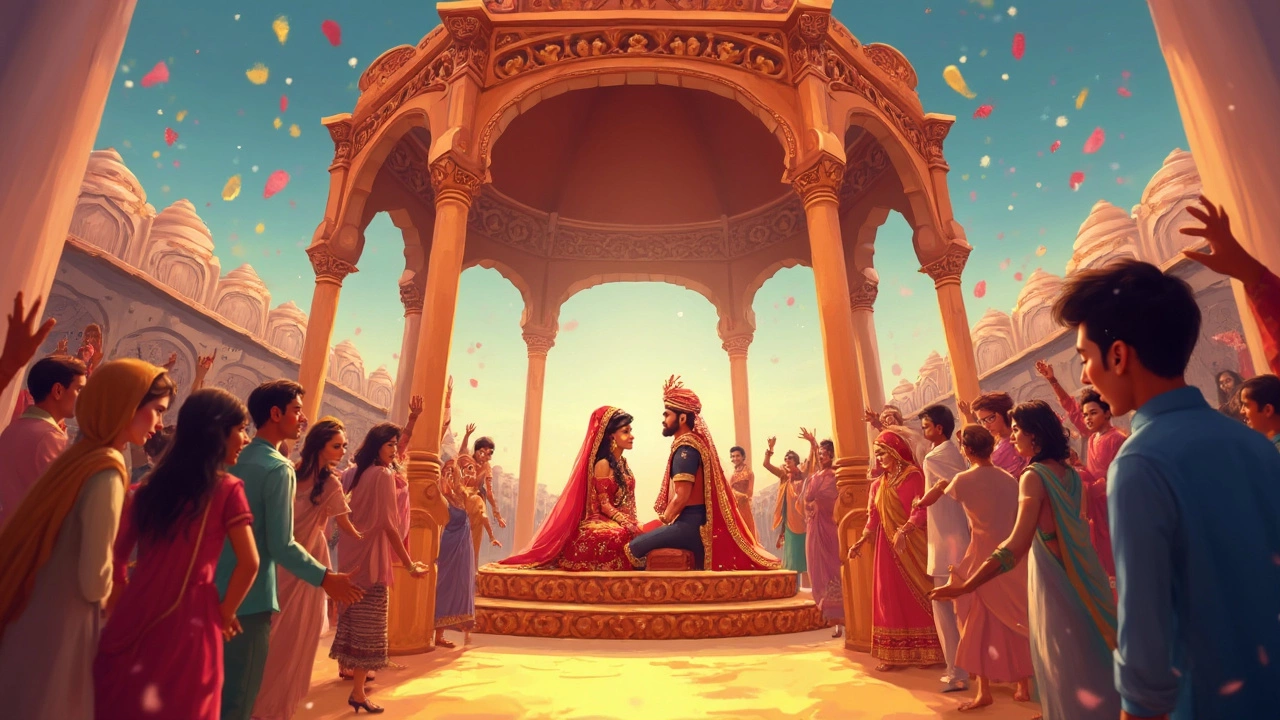
Preserving Cultural Integrity While Traveling
When diving into cultural tourism, it's not just about what we take from these places but how we can give back by respecting and preserving the very culture we experience. India, with its vast array of traditions and customs, asks for just that. So, how do we ensure that we’re not disrupting the local way of life?
Engage Respectfully
Start with genuine interactions. When visiting a local market or participating in a traditional dance, always approach these moments with respect and curiosity. You’ll find that most people are eager to share their culture when they see genuine interest. Remember, learning a few local phrases can go a long way in building a connection.
Support Local Communities
One effective way to maintain India’s cultural integrity is by supporting local businesses. Opt for buying crafts directly from artisans rather than mass-produced souvenirs. Staying in locally-owned accommodations can also provide you with a more authentic experience while supporting the community economically.
Mindful Photography
While capturing moments is a big part of travel, always ask for permission before photographing people or sacred sites. This respects their privacy and beliefs. Keep in mind, not every moment or place is appropriate for a photo.
Responsibility in Participation
Whether you're joining a religious celebration or being invited to a family meal, understand the rules and customs. For example, when visiting temples, dressing modestly and removing shoes are general norms.
Here's a quick reminder for those eager to sustain cultural tourism in India:
- Learn about cultural etiquettes and follow them diligently.
- Limit waste and minimize your ecological footprint.
- Choose experiences that are organized by the locals rather than large conglomerates.
By preserving cultural integrity while traveling, we're essentially safeguarding the richness of India not just for ourselves, but for future adventurers and locals who call it home.
